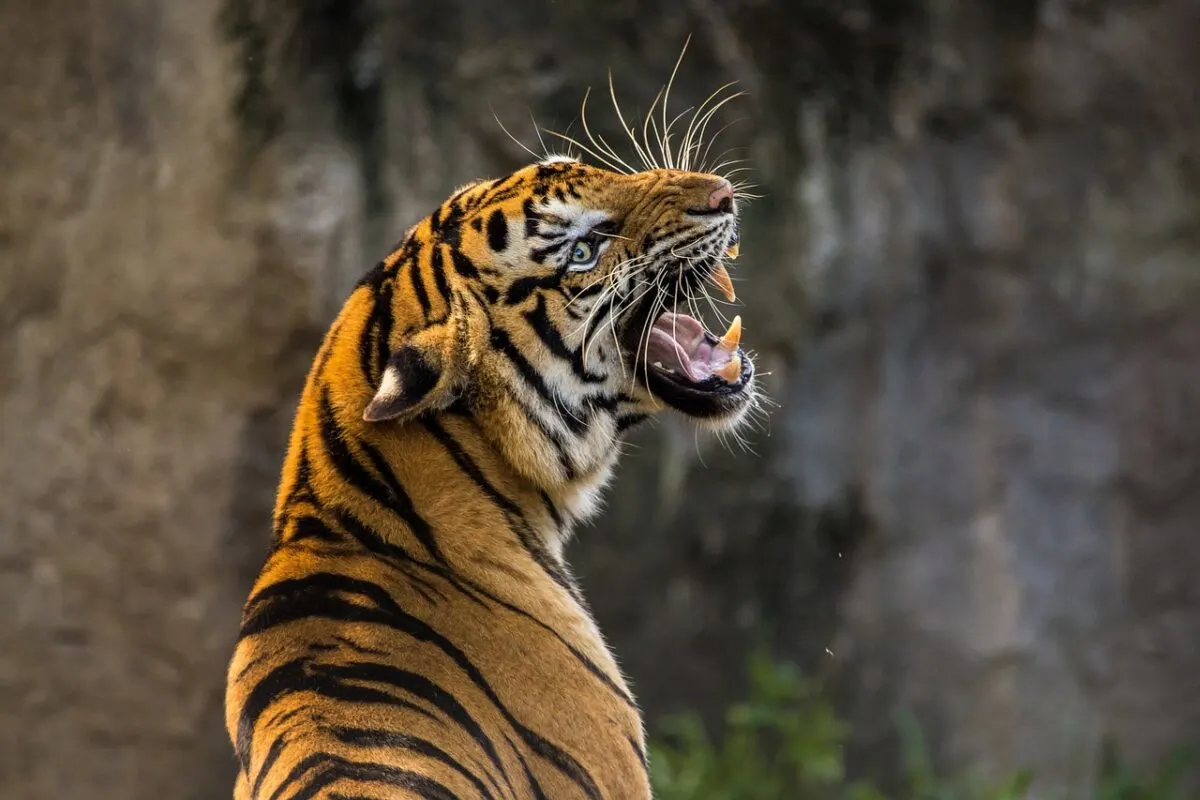Are you a feline fan? I know my answer is YES! Let us pounce into the thick of it together with the tiger and the jaguar.
Although these two iconic wild cats look similar and both have an air of mystery about them, when viewed closely, their differences become much more apparent. This blog post will cover each cat’s physical characteristics, habitats, diet preferences, hunting behavior, and more!
You will want to make sure you can tell the difference between the two at first glance or want to learn something new about warm-blooded animals. Let’s look closer together and discover why tigers vs. jaguars are so fascinating!
Want to jump ahead? Click below
Comparison Table
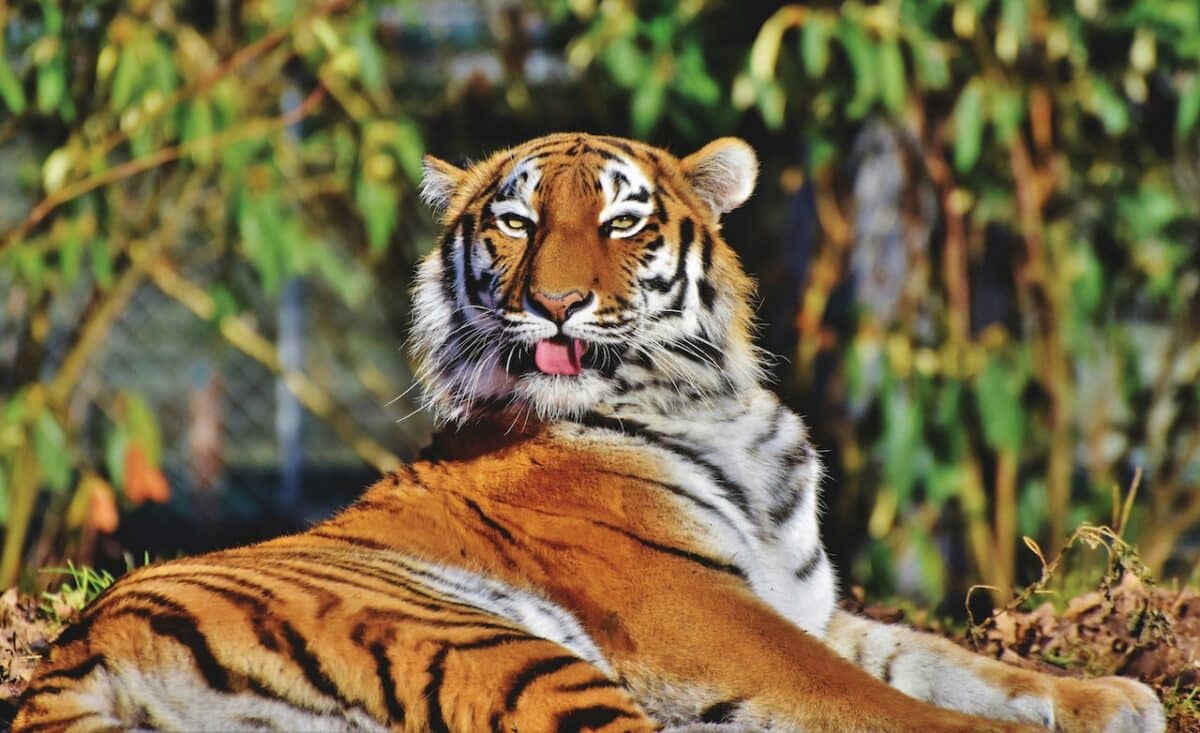
| Jaguar | Tiger | |
|---|---|---|
| Scientific name | Panthera onca | Panthera tigris |
| Habitat | Dry deciduous forests, scrublands, savannas, and swamps of central and south America | Tropical forests, grasslands, and swamps of Asia. |
| Diet | Jaguars are carnivorous mammals that feed mainly on fish (such as piranha), reptiles (like lizards or turtles), birds (turkeys), amphibians (like frogs), as well as small mammals like monkeys and deer. | Carnivorous predators and primarily hunt large mammals |
| Endangered Status | Conservation efforts are ongoing throughout Latin America, where jaguar populations face threats from poaching, habitat destruction, or fragmentation due to agricultural expansionism. | Vulnerable, with a decreasing population due to habitat loss and poaching. |
Tiger:
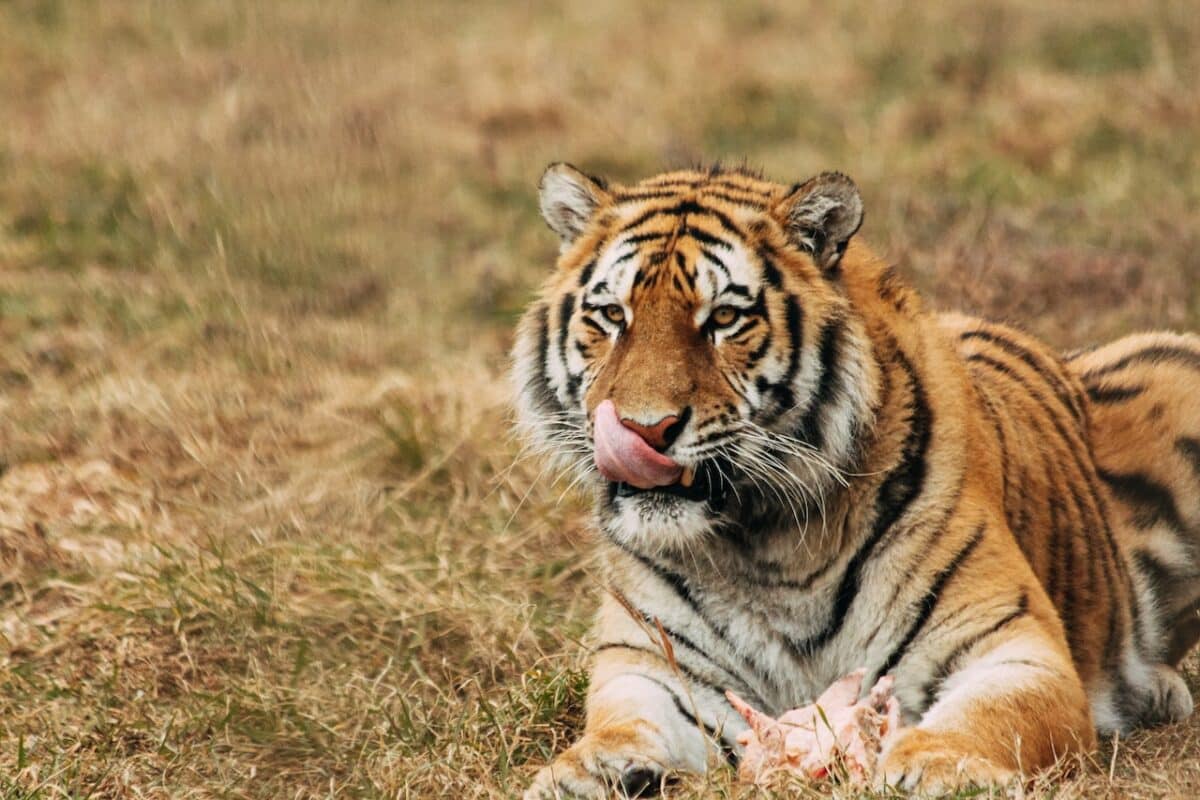
Tigers undeniably stand as one of the most majestic and formidable creatures on our planet. These colossal cats are recognized globally for their striking stripes and commanding roars, symbolizing courage and power. In this article, we’ll delve into the various facets of tigers, including their physical attributes, natural habitat, geographical distribution, dietary preferences, hunting behavior, social structures, breeding patterns, and their interactions with humans.
Physical Characteristics
Tigers are known for their distinctive stripe pattern, which helps them to blend into their surroundings and remain camouflaged when hunting. They have a white belly and face, and their eyes are famous for their ability to see in the dark.
Moreover, Tigers are muscular and powerful animals weighing up to 400 pounds. They have powerful legs and sharp claws to protect themselves against predators. Tigers have excellent vision and hearing, which makes them effective predators in the wild.
Habitat and Distribution
The fierce species are found in various habitats, including tropical forests, grasslands, and swamps. They are typically native to Asia, including countries such as India, Bhutan, China, and Russia. Due to the destruction of their natural habitat, tigers are now classified as endangered, with only a few thousand remaining in the wild.
Diet and Hunting Habits
Tigers are carnivores and feed on large mammals such as deer, boars, and buffalo. They are solitary hunters who follow their prey with stealth and tremendous muscles, often waiting hours before striking. Tigers have been known to take down animals many times their size.
Social Structure and Breeding Habits
Tigers are solitary animals but have been known to form social attachments. Male tigers have a particular territory and will permit different females to enter their environment for breeding. Tiger cubs are highly vulnerable to predators and remain hidden with their mothers for the first few months of their life.
Interaction With Humans
The interaction of tigers with humans is a topic of concern worldwide. The growing human population has led to the loss of the tigers’ natural habitat, and poaching remains a significant threat to their survival.
Tigers are now considered an endangered species, and several conservation efforts are underway to protect them. These efforts range from anti-poaching operations to breeding programs in captivity.
In short, tigers are fascinating animals with unique appearances and exceptional abilities. Their strength and agility make them excellent predators in the wild, although their existence is now threatened.
Jaguars
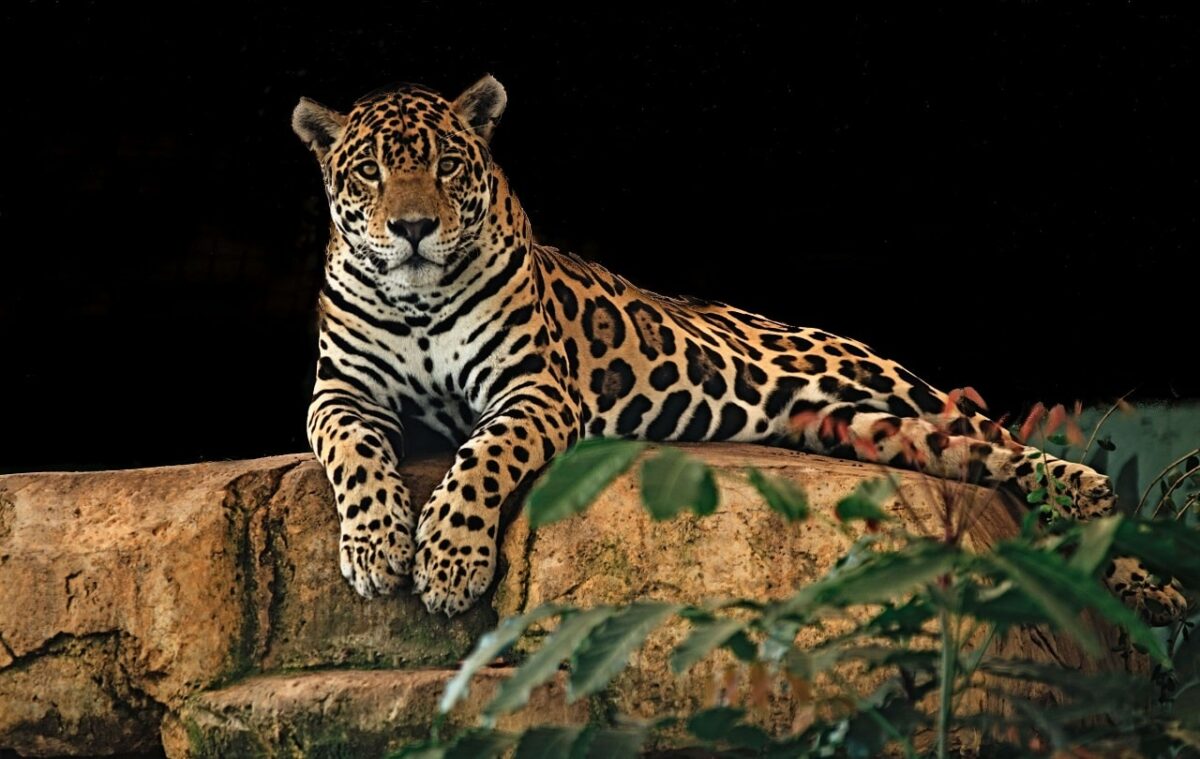
Physical Characteristics
The jaguar, a robust and sizeable feline indigenous to the Americas, ranks as the third-largest among all big cats, following tigers and lions. These formidable creatures can attain substantial weights, occasionally reaching up to 250 pounds.
Jaguars are renowned for their remarkable coats, adorned with golden yellow fur adorned by distinctive black spots meticulously arranged in rosette-like patterns.
Their physique is characterized by powerful limbs, short legs, stout bodies, and lengthy tails, all of which contribute to their remarkable agility and ability to navigate diverse habitats with speed and efficiency.
Habitat and Distribution
Jaguars are native to the Americas and are found in many habitats, like tropical rainforests and grasslands. They prefer to live near water sources, such as rivers and streams, and can be seen from the southwestern United States to northern Argentina.
Diet and Hunting Habits
Jaguars are carnivorous mammals that feed mainly on fish (such as piranha), reptiles (like lizards or turtles), birds (turkeys), amphibians (like frogs), as well as small mammals like monkeys and deer.
They are solitary hunters that ambush their prey from the trees or through dense vegetation. Jaguars have powerful jaws and can kill larger prey such as deer, peccaries, and capybaras. They are also known to raid livestock, which can put them in conflict with humans.
Social Structure and Breeding Habits
Jaguars tend to lead solitary lives outside the breeding season when females come together for mating purposes before returning to solitary life afterward.
While males are typically solitary creatures, they may occasionally form temporary associations with several other individuals before returning to their reclusive ways; female jaguars may sometimes stay together in groups composed of related individuals; however, this behavior is less common than that displayed by males within populations.
Jaguar cubs achieve sexual maturity around three years old; they usually give birth once every two years, with each litter averaging one to four cubs!
Interaction with Humans
Jaguars, despite their solitary nature, have held significant roles in ancient cultures within their habitat. Particularly among the Mayan civilizations, these majestic creatures were revered for their beauty, strength, power, and hunting prowess.
In modern times, human-jaguar interactions are primarily driven by competition for resources, such as food and habitat. However, it’s worth noting that physical confrontations between the two species are relatively rare.
Conservation initiatives are actively underway across Latin America to protect jaguar populations, which face threats like poaching, habitat destruction, and fragmentation due to agricultural expansion. These ongoing efforts hold the promise of bolstering jaguar numbers across the continent, benefiting both human communities and wildlife alike.
Key Points
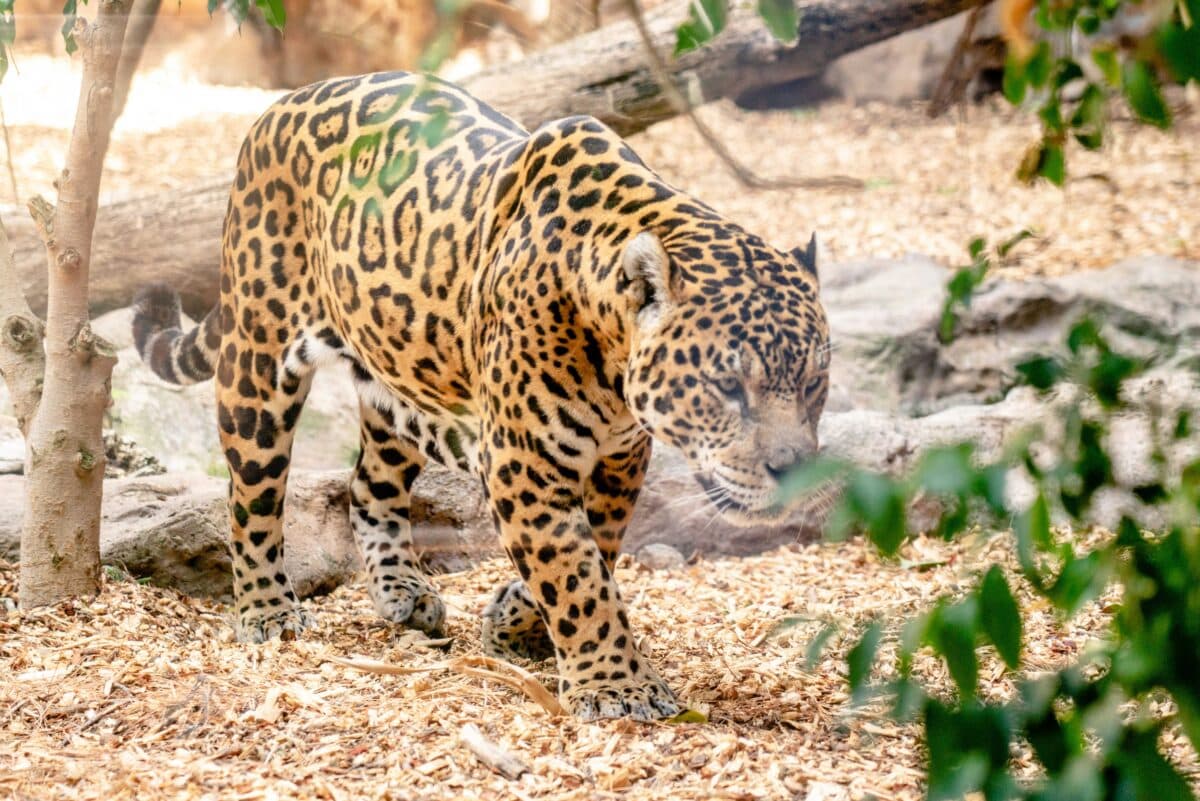
| Tigers are known for their distinctive stripe pattern, which helps them to blend into their surroundings and remain camouflage when hunting. |
| Jaguars are the third largest of all big cats, after tigers and lions, and can sometimes weigh up to 250 lbs. |
| Jaguars and Tigers are carnivorous mammals that feed mainly on fish (such as piranha), reptiles (like lizards or turtles), birds (turkeys), amphibians (like frogs), as well as small mammals like monkeys and deer. |
| The growing human population has led to the loss of the jaguar’s and tigers’ natural habitat, and poaching remains a significant threat to their survival. |
| Tigers are known for their distinctive stripe pattern, which helps them to blend into their surroundings and remain camouflaged when hunting. |
Wrapping Up with Tiger vs. Jaguar
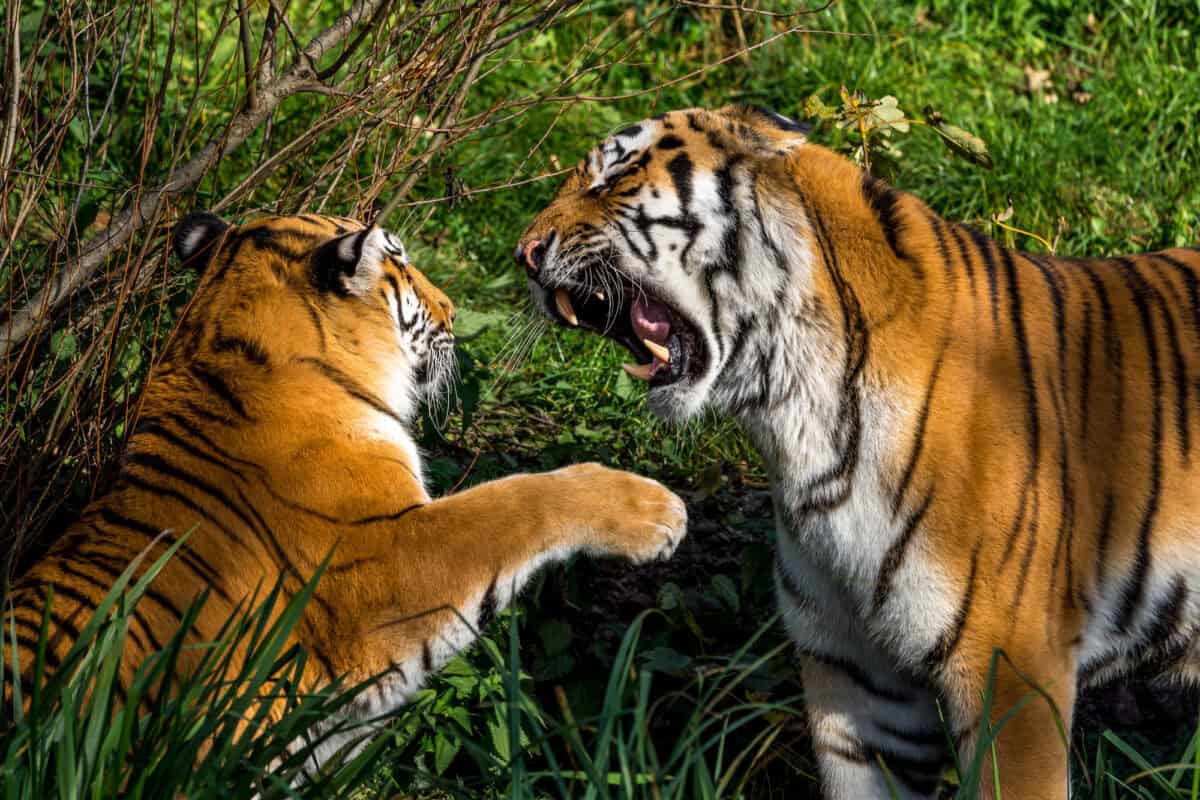
In conclusion, the tiger and jaguar are formidable predators with distinct appearance, behavior, and range differences. Regarding habitat, tigers are primarily found in Asia, while jaguars are in Central and South America.
Both species are threatened by habitat loss and poaching. The tiger is classified as endangered and the jaguar as near threatened. Despite their differences, the tiger and jaguar are fascinating and essential animals that deserve our respect and protection.
Thanks for following along with me! I hope you enjoyed reading about the pros and cons of two very different terrestrial animals. Next are Who Would Win In A Faceoff?, Lion and the Eagle, and The Puma & the German Shepherd.
- Blue Whale vs. Finn Whale - October 21, 2024
- New York Rescue Duck Found Himself An Emotional Support Duck - October 21, 2024
- Bear’s Bold Airport Adventure Chaos at Tampa International - October 20, 2024

